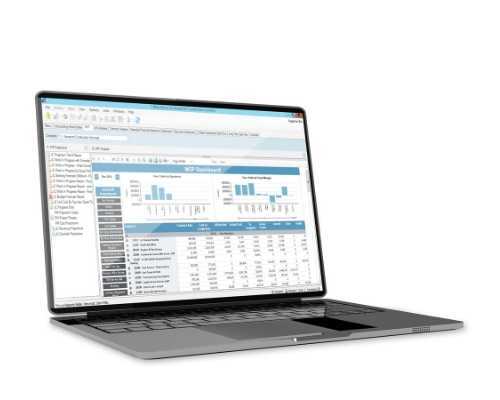3 Minute Read
November 29, 2017
0%

As a general contractor, one of the most critical keys to success is maintaining collaborative, fruitful working relationships with subcontractors. After all, you likely work with anywhere from hundreds to potentially thousands of them each year. They are the fuel powering your projects, wielding the carpentry hammer, plumbing the pipework, or wiring the electrical fixtures.
These days, tasked with managing projects that are larger, more complex and data-driven than ever before, it’s even more important to build solid subcontractor relationships. It can be a balancing act. On one hand, you need to effectively tracking their progress — holding them accountable for quality, safety and timelines. On the other, respecting their expertise and seeking their input and innovation while also providing them with the resources, timely communications and information they need to highly perform.
On top of that, construction remains one of the most heavily-regulated industries with a need to maintain compliance at all times. Beyond the contractual agreements with the project owner and subcontractors, general contractors need to consistently keep tabs on building codes, insurance and bonding requirements, credit and background checks, prevailing wage and union payroll requirements, lien requirements, a plethora of safety regulations and much more. This often means that reigning in multiple subcontractors on every job requires full-time attention.
With a healthy mix of industry best practices and modern technologies, today’s leading general contractors are able to not just maintain healthy working relationships with their subcontractor, but consistently improve them. Here are six tips these leading firms put into practice every day:

This might go without saying, but you need to make sure subcontractors are capable of doing the work you need them to. That means both physically and financially. Before soliciting bids from subcontractors, review prequalified subcontractors and remove those that do not have the right amount of experience or resources for the size and scope of your project. You might have 30 electrical subcontractors that you’ve regularly done work with, but perhaps only 10 of them have the expertise you need on your next project. Target those 10 and invite them to bid.
Additionally, keeping consistent tabs on subcontractors recent productivity and quality metrics will help you determine which ones are best suited. And, of course, new subcontractors are emerging every day — especially if you’re doing work in a new region, market or vertical. Look for subcontractors that are using modern technologies and up-to-date software rather than relying on manual processes, as many of your clients are demanding modern approaches and real-time data that some contractors may not be able to easily provide.
When you select a subcontractor, all of their roles and responsibilities should be written into the contract. Terms and conditions should be clearly defined, including project specifications, expectations, timelines and all aspects of renumeration and payment methods. This is also a good time to review and ensure the subcontractor has all of its own proper documentation in place, from licensing and bonding to special certifications and union payroll ability/documentation (if needed).
Subcontractors should be walked through all aspects of the project, the technologies and platforms used, communication practices and procedures and more. This should also include a rigid overview of safety procedures and practices. The subcontractor should have their own suitable health and safety, environmental and industrial relations procedures in place, and in compliance with your project.

Collaboration is the glue for any successful construction project. Keeping your subcontractors consistently in the loop with project changes, working with real-time data and systems and delivering information ahead of schedule will go a long way toward ensuring that all team members are working from the same page. Consider implementing an integrated, cloud-based construction management solution that expands access to the entire project team, including subs. Allowing them to access and enter their own data, see real-time project information and automate workflows for processes like time collection, invoices, change orders, purchase orders and more will help deliver more productive, higher-quality work.
In addition to delivering project information on a timely basis, make sure lines of communication are always open and that you’re attainable for your subs. Listen to their concerns and quickly address questions. Being open, honest and transparent will build trust and respect with skilled subs, and increase the odds of them wanting to work with you again.
Since a key part of ensuring compliance and project quality is the documentation, it’s important to have a fluid system of record keeping in place. That means easy-to-access, correctly-versioned documents in a central location, with an effective means of distribution and with backup copies in place should they be needed. Unfortunately, many contractors are still relying on physical paper, file cabinets and other archaic means of document and data collection. These are not ideal methods as documents can take longer to find, can get lost and might not be recoverable in the case of a disaster like a fire or flood.
Modern cloud-based construction software solutions feature powerful document management functionalities that not just allow contractors to go paperless, they guarantee consistently backed up digital audit trails. Whether a single-page document or hundreds of pages of detailed plans, drawings and specs, these documents can be quickly accessed, updated and shared when needed. Intuitive versioning controls and alerts when expirations or new information is needed ensure that teams are always working with the latest information in hand.

A subcontractor is only as good as the work it is measured by. At the end of the day, the job might get done, but at what cost? Keep close tabs on how productive your subcontractors are, how quickly they processes data like progress reports and invoices, how they approach safety and jobsite processes and how well they work with other team members. Of course, that means a lot of data points to track.
Integrated, cloud construction software gives you the best vehicle to streamline subcontractor tracking — from compliance and safety to progress and costs. Real-time information means more in-depth data and reporting, which can also help spot problems before they occur. Consider using advanced metrics and data analytics to measure performance of particular subs and teams against others or outlining specific regional or project-based challenges. This can go a long way toward establishing benchmarks of your highest performing subs.
Like the work a particular subcontractor has done? Let them know. Once of the most valuable ways, of course, is to keep sending business their way or renewing contracts. Some contractors offer bonuses for reaching certain stretch goals like finishing work ahead of deadlines or limiting material costs/waste. It’s a good idea to review all aspects of their work during the closeout stages of the project and recap what went right and what went wrong.
Rewarding your subs make is more likely they’ll work with you again, and might be more willing to negotiate on bid prices and services offered for future projects. Conversely, if there are areas where subcontractors could improve, don’t be afraid to constructively share that information with them.
Being data driven, yet transparent and open goes a long way toward building solid working relationships with your subcontractors. So why take a chance by playing the data guessing game with manual processes and outdated technologies.
3 Minute Read
November 29, 2017
6 Minute Read6 Minute Read
October 2, 2018
6 Minute Read
March 5, 2020